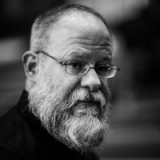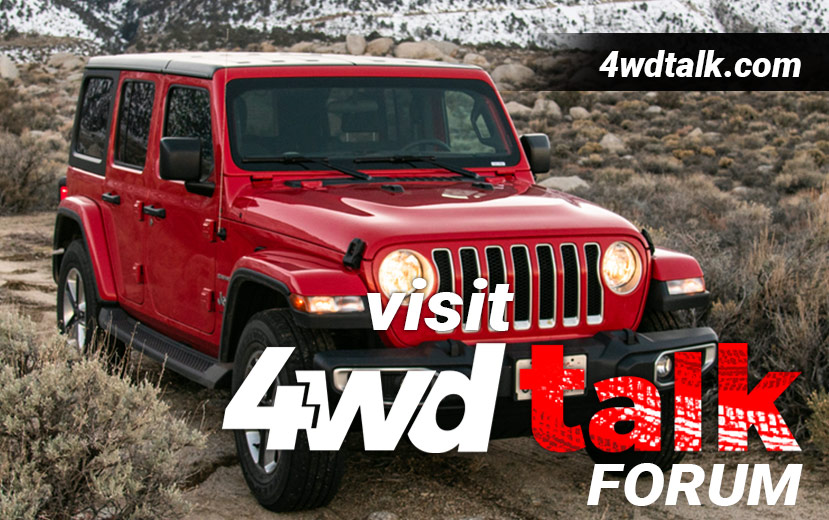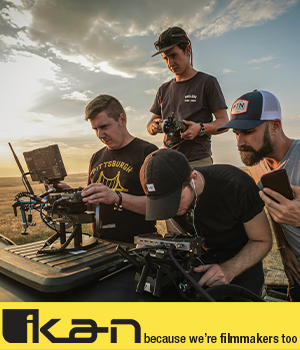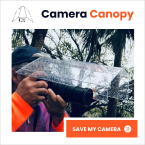- Forum
- Photography and Camera Forum
- Equipment Research, Buying and Using
- Digital Cameras
- from APS-C to full-frame
from APS-C to full-frame
-
 Topic Author
Topic Author
- amatula
- Newbie
- Follower: 1
-
Points:
707
Post #671028
I have had a Canon Rebel SL1 with a 24 mm F2.8 IS lens which I use predominantly for landscape and next, travel.
I love it, but I have thought to upgrade to full-frame so I can capture more shadow areas and more detail.
I have a chance to purchase a used Canon 5D Mark II camera from a camera store where I live for $6oo. It is heavy I acknowledge and older but I do not feel I need the "latest and greatest."
I am thinking too a F2.8 zoom lens in the range of 15 - 85 would be just what I need.
But I am also a travel photographer so don't really want to haul around heavy/bulky gear traveling and hiking and wondering if there are any other options available for full-frame (or mirror).
And because I travel, I don't want to spend the money full the best/most professional cameras (but I would buy high quality used from a camera store).
If you have a camera (any manufacturer!) and lens that you love for travel and landscape (with image stabilization), can you share, along with the lens?
Thank you for your time and happy New Year!
Annie
-

- garyrhook
- Oh Wise One
-
- Nikon D850, Nikon D750, Panasonic G7K
- Followers: 912
- Posts: 11103
-
Points:
67681
Post #671042
You are correct that a larger sensor will help get more detail in the extremes of the dynamic range. But frankly, a used Nikon D700 would be a better choice than the 5D mk II (and both are heavy). And if your budget is modest, your only choice for mirrorless with larger sensors is Sony. Otherwise, you're looking at micro four thirds, where there are a lot of choices there in both bodies and lenses.
You don't need an f/2.8 lens for landscapes, and you hardly need it for travel. f/4 would, with a decent body, get you everything you need, excepting dark environments.
-
 Topic Author
Topic Author
- amatula
- Newbie
- Follower: 1
-
Points:
707
Post #671126
I appreciate the reply.
Out of curiosity, why do you think the Nikon D700 (at 12.1 mp) is a better choice than the D5 Mark II (21 mp)?
I do not mind buying used from a dealer... I get the best of both worlds then: a better camera and a good price
Happy New Year!
Annie
-

- Nikon Shooter
- Oh Wise One
-
- 3S 3X 810 850
- Followers: 197
- Posts: 13795
-
Points:
88942
Post #671130
full-frame and 12 or maybe 24 MP… the argument
of larger pixels still holds the road. My experience.
Light is free… capturing it is not!
-

- garyrhook
- Oh Wise One
-
- Nikon D850, Nikon D750, Panasonic G7K
- Followers: 912
- Posts: 11103
-
Points:
67681
Post #671148
-

- Kenta
- The Lounger
-
- Nikon D810
- Followers: 172
- Posts: 1005
-
Points:
13417
-
 Topic Author
Topic Author
- amatula
- Newbie
- Follower: 1
-
Points:
707
Post #672237
That's very interesting that you mentioned that! I had also been considering a used Nikon D610 that a local photography store has and just surfed for more info on the D700. I also looked at a used Canon 5D Mark II.
Hoping I can demo a few.
Thanks again!
Annie
-

- 7Wishes
- New Kid On The Block
-
- Canon EOS 5D Mark IV and Canon EOS M5
- Followers: 61
- Posts: 49
-
Points:
3379
Post #680511
-

- TCav
- The Lounger
-
- Nikon D7200. Sony A77 II. Pentax KP.
- Followers: 86
- Posts: 1075
-
Points:
32974
Post #708409
A larger image sensor provides a more shallow Depth of Field for images with the same perspective. For instance, a 'Full Frame' body with a 105mm lens and an 'APS-C' body with a 70mm lens, will produce almost identical images with almost identical perspectives. But with an aperture of f/2.8 and a subject distance of 10 feet, the 'Full Frame' body will get a total DoF of 0.45 feet while the 'APS-C' body will get a total DoF of 0.69 feet, which is about what the 'Full Frame' body would get with an aperture of f/4.0. If the 'Full Frame' body was using a 24-70/2.8 lens and the 'APS-C' body was using a 17-50/2.8 lens, they would both be capable of almost identical images, but with an aperture of f/2.8 and a subject distance of 7 feet, the 'Full Frame' body would have a DoF of 0.5 feet and the 'APS-C' body would have a DoF of 0.66 feet, about what the 'Full Frame' body would get with an aperture of f/4.0. And if the 'Full Frame' body was using a 70-300 lens and the 'APS-C' body was using a 55-200 lens, they could both produce nearly identical images, but at f/5.6 and a subject distance of 100 feet, the 'Full Frame' body produces a DoF of 11.4 feet, while the 'APS-C' body produces a DoF of 17.3 feet, about what the 'Full Frame' body would get using an aperture of f/8.0. So the difference in Depth of Field is only about a single stop.
A larger sensor performs better than a smaller one, but few attempts have been made to quantify the difference. DxOMark.com performs a series of measurements on many cameras, and publishes the results on its website in such a way that the results from different cameras can be compared. It publishes a lot of "scores" and other values that seem to be actual measurements, but the only two that are direct measurements are for SNR 18% (signal to noise ratio) and Dynamic Range (the luminance range, from brightest to dimmest.)
The results show that, for instance, the level of image noise of Canon's 'APS-C' 7D Mk II is 35.5 dB at an ISO setting of 400, while the 'Full Frame' 6D scores 36.2 dB at ISO 800 and 33.4 dB at ISO 1600. That works out to the 'Full Frame' 6D having about a 1-1/3 stop advantage over the 7D Mk II with respect to noise. Similarly, the dynamic range of the 7D Mk II at ISO 400 is 11.39 Ev, while the 6D scores 11.55 Ev at ISO 800 and 11.12 Ev at ISO 1600, giving a 1-1/2 stop advantage over the 7D Mk II . (See Canon EOS 7D Mark II versus Canon EOS 6D)
Nikon's 'APS-C' D7200 scores a SNR 18% of 33.7 dB and a dynamic range of 11.89 Ev at ISO 800, which gives Nikon's 'Full Frame' D610 a little over a one stop advantage in noise and about 1/3 stop advantage in dynamic range. (See Nikon D7200 versus Nikon D610) In addition, Sony's 'APS-C' A77 Mk II scores 35.6 dB and 11.52 Ev at ISO 400, roughly 1 stop behind Sony's 'Full Frame' A99, in both measurements. (See Sony SLT Alpha 77 II versus Sony SLT Alpha 99) So there is certainly a promise of improved image quality with larger image sensors.
One of the advantages of 'APS-C' bodies over 'Full Frame' bodies, though, is the abundance of lenses, both 'Full Frame' and 'APS-C only' ('EF-S', 'DX', 'DT', 'DA', 'DC', 'Di-II'), and one of the disadvantages 'Full Frame' bodies have, when compared to 'APS-C' bodies, is that many 'Full Frame' lenses exhibit additional vignetting, distortion, transverse chromatic aberration and/or field curvature that don't appear when those same lenses are mounted on 'APS-C' bodies.
So while a 'Full Frame' body may be capable of better image quality, the lenses may have trouble delivering it.
It's your call, of course, but the advantages are not nearly as great as I've heard some say, and I think you should know exactly what you'd be getting yourself into. If you need the slightly more shallow DoF, the slightly lower noise, and/or the slightly greater dynamic range, and you can find an appropriate lens or lenses from the limited selection, to give you the results you want, I hope it works out well for you.
But there's very little you can't do with a smaller, lighter, cheaper 'APS-C' kit.
- Forum
- Photography and Camera Forum
- Equipment Research, Buying and Using
- Digital Cameras
- from APS-C to full-frame
Latest Reviews
The Sigma DP2 Quattro is a rare breed. It’s a large-sensor point-and-shoot camera with a 29MP sensor and a 30mm f/2.8 fixed lens. The question is, who is this camera for? Let’s find out!
I’ve been testing the Vanguard VEO 5 264CB-160S for several weeks now, and I have to say that my first impressions are nothing but good. Vanguard has knocked it out of the park yet again!
The Fujifilm X-H2s is Fuji’s flagship hybrid APS-C mirrorless camera. It launched in the summer of 2022 and has been impressing photographers and videographers alike ever since!
The Sony a9 III is a powerhouse professional-grade camera. The question is, should it be the next item in your camera bag? Find out if it’s worth the money in this comprehensive review!
Latest Articles
The Canon EOS R1 was finally released last week, and the question is - does it live up to the hype? Let’s dive in and explore firsthand what this camera does and doesn’t offer.
Improving your photography skills takes time, effort, and dedication. But with these unique exercises, you can make the process of becoming a better photographer more fun, too!
Night street photography is a fun pursuit with opportunities to develop your skills with portraiture, light trails, and architectural photography skills - and your nighttime photography skills, too!
The Canon EOS R5 Mark II has been unveiled, but it has a hefty price tag. If it’s out of your budget, the original Canon EOS R5 is a fantastic option. Learn more about it in this guide!
The Sigma DP2 Quattro is a rare breed. It’s a large-sensor point-and-shoot camera with a 29MP sensor and a 30mm f/2.8 fixed lens. The question is, who is this camera for? Let’s find out!
You need to try unique newborn photography ideas from time to time to keep your inspiration levels up. With the ideas in this guide, you can do just that!
What is the best landscape lens for photography - a prime or a zoom? The answer is a little murky, as it depends on the specific situation. Learn more about these lenses in this detailed guide!
Lightning photography is a tricky beast, but with the right tips, tricks, and tools, you can make the most of the next storm that rolls through. Learn some essential techniques in this guide!

















